 |
King of Chemicals Manufacturers |
Specifications, Properties, Uses, SDS of Macrogols or Polyethylene Glycol USP NF BP Ph Eur IP EP Grade Manufacturer Supplier Exporter Wholesale & Small Packs, CAS Number 25322-68-3. |
|
| King of Chemicals has several associated companies having accreditations like cGMP, GLP - FDA Approved Good Manufacturing Practice and Good Laboratory Practice of WHO standard, ISO-9001, ISO-14001, ISO/IEC 17025, ISO ISO-45000, HACCP, FSSC 220000, FSSAI, "REACH" Registered, Kosher & Halal Certified. e-CTD and DMF support can be made available if needed. We offer USP NF BP Ph Eur EP IP JP Analytical Reagent FCC Food Grade Chemicals & Nutraceuticals. | |
        |
|
Muby Chem Pvt. Ltd. is a several decades old group of companies, engaged in manufacturing, supplying, distributing, wholesale supplies of Macrogols or Polyethylene Glycol USP NF BP Ph Eur IP EP Grade for actual users, including retail or small pack supplies for research and development work.
We supply fine and speciality chemicals, pharmaceutical excipients, mineral fortifiers in chemically pure, analytical reagent grade, IP BP USP Ph Eur EP JP and other pharmaceutical grade monograph including FCC Food grade chemicals and Nutraceuticals at best prices. We and/or our associated units have all the facilities to supply as per cGMP standard observing good manufacturing practice and good laboratory practice. We can assure low microbial count and also offer a test certificate for the same. We maintain warehouses across USA, India, and UAE. Our group exports to USA, Canada, Mexico, Argentina, Brazil, Chile, Korea, Malaysia, Thailand, Indonesia, Europe, and several other parts of the world. We supply in wholesale container loads to small pack of few grams. Solid products may be specified for it size and shape as desired by the buyer.
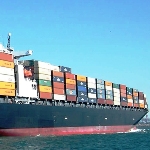

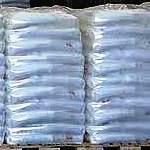
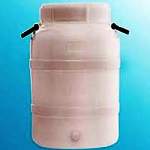
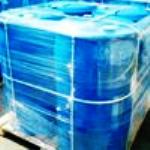
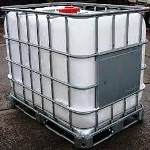
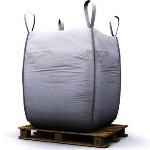
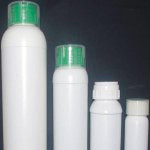
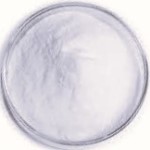
Macrogols or Polyethylene Glycol CAS Number 25322-68-3
For Properties Specifications Uses of Macrogols or Polyethylene Glycol Click Properties, Specifications, Uses, Price, Process of Macrogols or Polyethylene Glycol Manufacturer.
For For SDS MSDS Sheet of bbbbb Click SDS Safety Data Sheet MSDS Sheet of Macrogols or Polyethylene Glycol Manufacturer.
The Properties, Specifications, Monograph and Uses of Macrogols or Polyethylene Glycol:
Polyethylene Glycol USP NF Grade:
Poly(oxy-1,2-ethanediyl), α-hydro-ω-hydroxy-;
Polyethylene glycol CAS 25322-68-3
DEFINITION
Polyethylene Glycol is an addition polymer of ethylene oxide and water, represented by the formula H(OCH2CH2)nOH, in which n represents the average number of oxyethylene groups. The average molecular weight is NLT 95.0% and NMT 105.0% of the labeled nominal value if the labeled nominal value is less than 1000; it is NLT 90.0% and NMT 110.0% of the labeled nominal value if the labeled nominal value is between 1000 and 7000; and it is NLT 87.5% and NMT 112.5% of the labeled nominal value if the labeled nominal value is more than 7000. It may contain a suitable antioxidant.
Residue on Ignition: NMT 0.1%
Limit of Free Ethylene Oxide and 1,4-Dioxane: To pass the test by Chromatography.
Limit of Ethylene Glycol and Diethylene Glycol (for Polyethylene Glycol having a nominal molecular weight of 450 or more but NMT 1000): To pass the test.
pH: 5.0 g of Polyethylene Glycol in 100 mL of carbon dioxide-free water. Add 0.30 mL of saturated potassium chloride solution. Acceptance criteria: 4.5–7.5
Completeness and Color of Solution: A solution of 5 g of Polyethylene Glycol in 50 mL of water is colorless; it is clear for liquid grades and NMT slightly hazy for solid grades.
Viscosity—Capillary Methods: To meet the requirement.
Macrogols BP Ph Eur Grade Specifications:
Action and use: Non-ionic surfactant.
DEFINITION
Mixtures of polymers with the general formula H-[OCH2-CH2]n-OH where n represents the average number of oxyethylene groups. The type of macrogol is defined by a number that indicates the average relative molecular mass. A suitable stabiliser may be added.
CHARACTERS
To meet the requirement.
IDENTIFICATION
A. Viscosity.
B. To 1 g in a test-tube add 0.5 mL of sulfuric acid, close the test-tube with a stopper fitted with a bent delivery tube and heat until white fumes are evolved. Collect the fumes via the delivery tube into 1 mL of ;mercuric chloride solution. An abundant, white, crystalline precipitate is formed.
C. To 0.1 g add 0.1 g of potassium thiocyanate and 0.1 g of cobalt nitrate and mix thoroughly with a glass rod. Add 5 mL of methylene chloride and shake. The liquid phase becomes blue.
TESTS
Appearance of solution: The solution is clear and not more intensely coloured than reference solution.
Dissolve 12.5 g in water and dilute to 50 mL with the same solvent.
Acidity or alkalinity: Dissolve 5.0 g in 50 mL of carbon dioxide-free water and add 0.15 mL of bromothymol blue solution. The solution is yellow or green. Not more than 0.1 mL of 0.1 M sodium hydroxide is required to change the colour of the indicator to blue.
Viscosity: The viscosity is calculated using a density given ----to meet the requirement.
For macrogols with a relative molecular mass greater than 400, determine the viscosity on a 50 per cent m/m solution of the substance to be examined.
Freezing point: To meet the requirement.
Hydroxyl value: Introduce m g (see Table 1444.-3) into a dry conical flask fitted with a reflux condenser. Add 25.0 mL of phthalic anhydride solution, swirl to dissolve and boil under a reflux condenser on a hot plate for 60 min. Allow to cool. Rinse the condenser first with 25 mL of pyridine and then with 25 mL of water, add 1.5 mL of phenolphthalein solution and titrate with 1 M sodium hydroxide until a faint pink colour is obtained (n1 mL). Carry out a blank test (n2 mL). Calculate the hydroxyl value using the following expression:
56.1*(n2-n1)/m
For macrogols with a relative molecular mass greater than 1000, if the water content is more than 0.5 per cent, dry a sample of suitable mass at 100-105C for 2 h and carry out the determination of the hydroxyl value on dried sample.
Reducing substances: Dissolve 1 g in 1 mL of a 10 g/L solution of resorcinol and warm gently if necessary. Add 2 mL of hydrochloric acid. After 5 min the solution is not more intensely coloured than reference solution.
Formaldehyde: Maximum 30 ppm.
Ethylene glycol and diethylene glycol: to pass the test.
Water: Maximum 2.0 per cent for macrogols with a relative molecular mass not greater than 1000 and maximum 1.0 per cent for macrogols with a relative molecular mass greater than 1000, determined on 2.00 g.
Sulfated ash: Maximum 0.2 per cent, determined on 1.0 g.
We also manufacture Macrogols EP Grade.
The MSDS-SDS Hazard Statement of Macrogols or Polyethylene Glycol:
Macrogols SDS, Safety Data Sheet
MSDS Sheet, Material Safety Data Sheet 31-March-25
Section 1 - Chemical Product and Company Identification
Product Name & Other Names: Macrogols or Polyethylene glycol.
CAS#: 25322-68-3
Intended Use: Industrial Manufacturing.
Section 2 - Hazards Identification
GHS, Globally Harmonized System Classification in accordance with 29 CFR 1910
Classification according to Regulation (EC) No 1272/2008
Not a hazardous substance or mixture according to Regulation (EC) No. 1272/2008.
This substance is not classified as dangerous according to Directive 67/548/EEC.
Labeling according to GHS USA & Regulation (EC) No 1272/2008
GHS Label Elements NONE |
Signal Word: None
Precautionary statements:
P261: Avoid breathing dust/fume/gas/mist/vapors/spray.
P262: Do not get in eyes, on skin, or on clothing.
P281: Use personal protective equipment as required.
P302+P352: IF ON SKIN: Wash with plenty of soap and water.
P304+P340: IF INHALED: Remove victim to fresh air and keep at rest in a position comfortable for breathing.
P305+P351+P338: IF IN EYES: Rinse cautiously with water for several minutes. Remove contact lenses, if present and easy to do. Continue rinsing.
P337+313: If eye irritation persists get medical advice/attention.
Section 3 - Composition, Information on Ingredients
Product Name & Other Names: Macrogols or Polyethylene glycol.
CAS#: 25322-68-3
EINECS EC code number: --
Percent: 95-100% (Dilution is with water, as required)
Section 4 - First Aid Measures
Always consult a physician after the first aid is given.
Eyes: Immediately flush eyes with plenty of water for at least 15 minutes, occasionally lifting the upper and lower eyelids. Get medical aid. Do NOT allow victim to rub or keep eyes closed.
Skin: Flush skin with plenty of soap and water for at least 15 minutes while removing contaminated clothing and shoes. Get medical aid if irritation develops or persists. Wash clothing before reuse.
Ingestion: Do NOT induce vomiting. If victim is conscious and alert, give 2-4 cupfuls of milk or water. Never give anything by mouth to an unconscious person. Get medical aid.
Inhalation: Remove from exposure to fresh air immediately. If breathing is difficult, give oxygen. Get medical aid. Do NOT use mouth-to-mouth resuscitation. If breathing has ceased apply artificial respiration using oxygen and a suitable mechanical device such as a bag and a mask.
Section 5 - Fire Fighting Measures
General Information: As in any fire, wear a self-contained breathing apparatus in pressure-demand, MSHA/NIOSH (approved or equivalent), and full protective gear. During a fire, irritating and highly toxic gases may be generated by thermal decomposition or combustion.
Flammability: Combustible but not flammable.
Extinguishing Media: Use Water, dry chemical powder, alcohol foam, water spray or fog. Cool containing vessels with water jet to prevent pressure build-up, auto-ignition, or explosion.
Special Information: In the event of a fire, wear full protective clothing and NIOSH-approved self-contained breathing apparatus with full face piece operated in the pressure demand or other positive pressure mode. At high temperatures under fire conditions, it may produce toxic or irritating fumes.
Section 6 - Accidental Release Measures
Personal precautions, protective equipment, and emergency procedures: Avoid breathing dust/fumes/gas/mist/vapors/spray. Use individual protective equipment (waterproof boots, suitable protective clothing, safety glasses, etc.). Restrict unprotected personnel from the area.
Environmental precautions: Do not let the product enter drains, soil, or water sources.
Methods and materials used for containment Cleanup procedures and Storage: Use proper personal protective equipment. Restrict unprotected personnel from the area. Remove all ignition sources and ventilate area. Do not inhale dust, vapors, mist, or gas. Avoid dust formation. Contain spilled material. Cover with an inert, non-combustible absorbent material, (e.g. sand, earth, diatomaceous earth, vermiculite). Neutralize with sodium bicarbonate or calcium hydroxide, and deposit in a sealed bag or container. Use a shovel to put the material into a convenient waste disposal container. Use water spray to dilute spill to a non-flammable mixture.
Section 7 - Handling and Storage
Precautions for safe handling: Apply according to good manufacturing and industrial hygiene practices. Ensure proper ventilation. In case of insufficient ventilation, wear suitable respiratory equipment. Wash thoroughly after handling. Do not drink, eat, or smoke while handling. Avoid contact with skin, eyes, and clothing. Minimize dust generation. Avoid breathing dust/fumes/gas/mist/vapors/spray. Keep container tightly closed. Avoid ingestion and inhalation. Use individual protective equipment (waterproof boots, suitable protective clothing, safety glasses, etc.).
Conditions for safe storage, including any incompatibilities: Store in cool, dry, and ventilated area away from heat sources and protected from sunlight in tightly closed original container. Keep air contact to a minimum. Store protected from heat, sparks and ignition sources and incompatible materials. Avoid inhalation of dust/mist/vapor. Do not store with incompatible materials like strong oxidizing agents.
Section 8 - Exposure Controls, Personal Protection
Airborne Exposure Limits: Not available.
Ventilation System: A system of local and/or general exhaust is recommended to keep employee exposures as low as possible. Local exhaust ventilation is generally preferred because it can control the emissions of the contaminant at its source, preventing dispersion of it into the general work area.
Personal Respirators (NIOSH Approved): For conditions of use where exposure to dust or mist is apparent and engineering controls are not feasible, a particulate respirator (NIOSH type N95 or better filters) may be worn. If oil particles (e.g. lubricants, cutting fluids, glycerin, etc.) are present, use a NIOSH type R or P filter. For emergencies or instances where the exposure levels are not known, use a full-face positive-pressure, air-supplied respirator.
Skin Protection: Wear impervious protective clothing, including boots, gloves, lab coat, apron or coveralls, as appropriate, to prevent skin contact.
Eye Protection: Use chemical safety goggles and/or full face shield where dusting or splashing of solutions is possible. Maintain eye wash fountain and quick-drench facilities in work area.
Other Control Measures: Maintain good housekeeping in work area. Handle in accordance with good industrial hygiene and safety practice.
Section 9 - Physical and Chemical Properties
Appearance: Clear viscous liquid
Odor: Nearly odorless.
Odor threshold: No data found.
pH: 5-7
Relative density: about 1.1
Melting point/freezing point: No data found.
Initial boiling point and boiling range: No data found.
Flash point: No data found.
Auto-ignition temperature: No data found.
Decomposition temperature: No data found.
Upper/lower flammability or explosive limits: No data found.
Vapor pressure: No data found.
Vapor density: No data found.
Evaporation rate: No data found.
Flammability (solid, gas): No data found.
Partition coefficient: n-octanol/water: No data found.
Solubility: Miscible in water
Viscosity: No data found.
Molecular Formula: H(OCH2CH2)nOH
Molecular Weight: Varies.
Section 10 - Stability and Reactivity
Chemical Stability: Macrogols is stable under normal temperatures and pressures.
Conditions to Avoid: Incompatible materials, exposure to heat, spark.
Incompatibilities with Other Materials: Oxidizing agents, High temperature.
Hazardous Decomposition Products: Carbon monoxide, irritating and toxic fumes and gases, carbon dioxide.
Hazardous Polymerization: Will not occur.
Section 11 - Toxicological Information
Acute oral toxicity (LD50): >15000 mg/kg [Rat] 4 hours.
Carcinogenicity: No component of this product present at levels greater than or equal to 0.1% is identified as possible or confirmed human carcinogen by IARC, ACGIH, OSHA and NTP.
Teratogenic Effects: No data found.
Mutagenic Effects: No data found.
Developmental Toxicity: No data found.
Reproductive Effects: No data found.
Section 12 - Ecological Information
Environmental Toxicity:
Fish toxicity (Leuciscus idus): LC50 > 10 g/l/48h
Bacteria toxicity EC0 > 12,5 g/l
Persistence and Degradability: Unlikely to persist due to water solubility.
Mobility: Likely to be mobile due to water solubility.
Bioaccumulation/ Accumulation: The material will readily biodegrade.
Results of PBT and vPvB assessment: No data found for assessment.
Section 13 - Disposal Considerations
Whatever cannot be saved for recovery or recycling should be managed in an appropriate and approved waste disposal facility.
Section 14 - Transport Information
DOT USA, TDG Canada & ADR/RID Europe: Not controlled.
IMDG/IMO: Not controlled.
IATA: Not controlled.
Section 15 - Regulatory Information
USA:
California Prop. 65 Components: Not listed.
Disclaimer:
**************************
Our company provides this MSDS sheet in good faith but makes no representation as to its comprehensiveness or accuracy. This SDS sheet is intended only as a guide to the appropriate precautionary handling of the material by a properly trained person using this product. The above information has been compiled from various sources and has the possibility of discrepancy and being out-dated information. Individuals receiving the information must exercise their independent judgment and do further search in determining its appropriateness for a particular purpose. In no case shall our company be liable to loss or damages by the product user.
**************************

Macrogols or Polyethylene Glycol Manufacturers, Suppliers, Exporters, Wholesalers:
King of Chemicals manufacturers

Plot No. 2900/46&47 + 2900/163to167, GIDC, Ankleshwar, Dist. Bharuch, India
India, USA, UAE
TEL: (Office) 91-22-23774610, 91-22-23723564
e-mail: info@kingofchemicals.com
Copyright and Usual Disclaimer is Applicable --- April 5, 2025
If I give you “My Word” Nobody can undo it.
If I sign an “Agreement” my Lawyer will undo it
Our products are for industrial and laboratory use only. The user must test the material before use. We are not dispensing chemists or druggist and do not offer over the counter type (OTC) products for medical use by individuals.
We and our associates manufacture pure chemicals surpassing Monograph Specifications of Analytical Reagent Standards, British & European Pharmacopoeia BP Ph Eur EP Standard, US Pharmacopoeia USP NF Standard, Indian Pharmacopoeia IP Standard, Japan Pharmacopoeia JP Standard, FCC Food Grade Standard. |
|